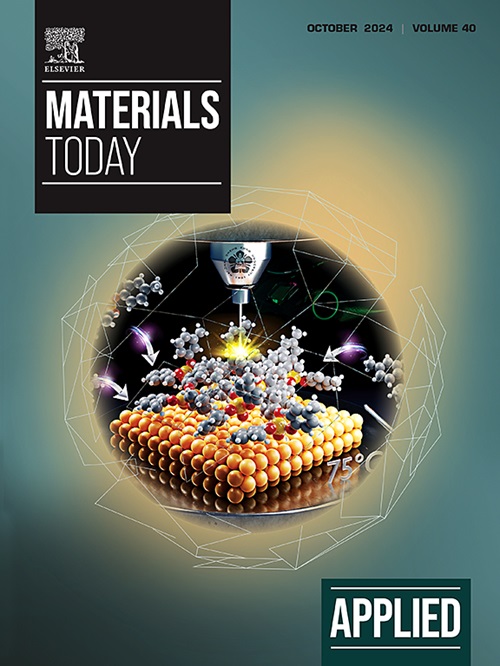Si/InAs/Ag metamaterial for strong nonreciprocal thermal emitter with dual polarization under a 0.9 T magnetic field
IF 6.9
2区 材料科学
Q1 MATERIALS SCIENCE, MULTIDISCIPLINARY
引用次数: 0
Abstract
The current nonreciprocal thermal emitter has been proven to completely violate the previous Kirchhoff's law. And the majority of related nonreciprocal devices operate under single polarization with few dual-polarization nonreciprocal designs. Therefore, dual-polarization nonreciprocal thermal radiation has great research prospects. In addition, many previous designs of nonreciprocal devices required external magnetic field energy of 3 T even higher, which is difficult to meet in practical applications. Therefore, this article investigates the strong nonreciprocal dual-polarization thermal radiation of cuboid arrays under lower external magnetic field. It is constructed by silicon, silver layer, InAs layer, and cuboid arrays. Finally, dual-polarization nonreciprocal radiation was achieved in a magnetic field of only 0.9 T, and the nonreciprocal efficiency has been significantly improved. The physical phenomenon of dual-polarization strong nonreciprocal radiation exhibited by the proposed device was explained by utilizing the electromagnetic field distribution at the resonant wavelength. It can also maintain good nonreciprocal properties under different structural parameters. Therefore, our proposed solution provides new opportunities for energy harvesting and thermal radiation control.用于 0.9 T 磁场下具有双极化的强非互易热发射器的硅/砷/银超材料
目前的非互易热发射器已被证明完全违反了之前的基尔霍夫定律。而相关的非互易器件大多在单极化条件下工作,很少有双极化非互易设计。因此,双极化非互易热辐射具有很大的研究前景。此外,以往许多非互惠器件的设计需要 3 T 甚至更高的外部磁场能量,这在实际应用中很难满足。因此,本文研究了立方体阵列在较低外磁场下的强非互惠双极化热辐射。它由硅、银层、InAs 层和立方体阵列构成。最后,在仅为 0.9 T 的磁场中实现了双极化非互易辐射,非互易效率显著提高。利用谐振波长处的电磁场分布,解释了所提装置表现出的双极化强非互易辐射的物理现象。它还能在不同的结构参数下保持良好的非互易特性。因此,我们提出的解决方案为能量收集和热辐射控制提供了新的机遇。
本文章由计算机程序翻译,如有差异,请以英文原文为准。
求助全文
约1分钟内获得全文
求助全文
来源期刊

Applied Materials Today
Materials Science-General Materials Science
CiteScore
14.90
自引率
3.60%
发文量
393
审稿时长
26 days
期刊介绍:
Journal Name: Applied Materials Today
Focus:
Multi-disciplinary, rapid-publication journal
Focused on cutting-edge applications of novel materials
Overview:
New materials discoveries have led to exciting fundamental breakthroughs.
Materials research is now moving towards the translation of these scientific properties and principles.
 求助内容:
求助内容: 应助结果提醒方式:
应助结果提醒方式:


